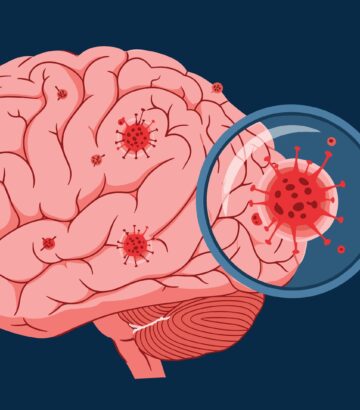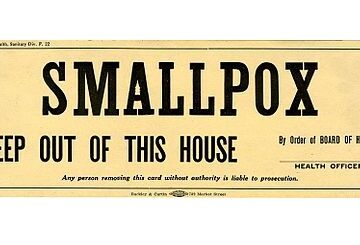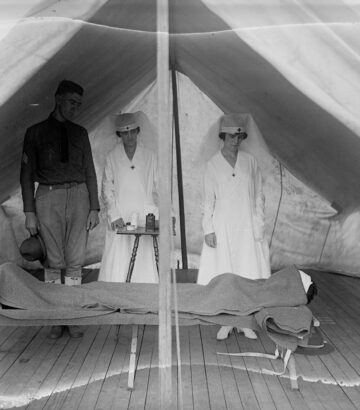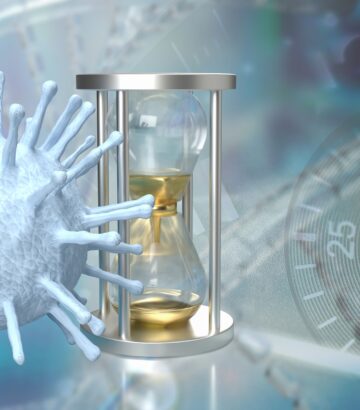My Long COVID Story: An Introduction
This post is part of a new blog series focusing on long COVID. See parts 1, 3, 4, and 5.
December 30, 2020: the day I first tested positive for COVID-19. I didn’t know it at the time, but my life would never be the same again. This was the beginning of my long COVID story. It would take an essay to tell the whole thing, but for now, here is an introductory post on my journey with long COVID.
I won’t write too much on my acute illness, as it was traumatic, progressing quickly from a loss of taste and smell to the worst asthma flare I’ve ever experienced. I spent the first hours of New Years Eve, 2020, in a hospital room, struggling to breathe and receiving monoclonal antibodies, approved for emergency use for individuals at increased risk of severe illness and death. I had never been so sick, and I feared that I wasn’t going to make it. Of course, I did survive, but what came next was an entirely different nightmare.
I never fully recovered from COVID-19. Instead, my symptoms persisted, and I had several new, chronic health problems: fatigue, brain fog, muscle spasms, autonomic dysfunction (abnormally high heart rate and low blood pressure), insomnia, menstrual cycle irregularities, etc. I was only 22 years old, and I had no idea why I suddenly had all these issues. My lungs aren’t the best, so I wasn’t the healthiest person before COVID-19, but my health certainly wasn’t that bad. So, I did some research – mostly in Facebook groups for long-haulers, as there was hardly any other available information at the time – and I knew I had long COVID. My primary care provider (PCP) agreed, and I was formally diagnosed in mid-2021.
I spent all of 2021 struggling with long COVID, a novel condition that no one fully understood. I have a phenomenal PCP, but there was no doctor who knew exactly how to address long COVID. Trying to manage my many symptoms was like playing a guessing game with different off-label treatments, with no promise of relief – only the hope that things would get better with time. I did experience a significant improvement in my health after receiving a COVID-19 booster shot (Moderna) in January of 2022, but this was short-lived, as I was reinfected that June.
My second COVID-19 infection left me with profound disabilities. I had worked full-time after the first bout of COVID-19, but the second infection ensured that I would be unable to function for months. All of my health problems resulting from infection #1 got worse, and infection #2 triggered several new, disabling conditions: autoimmune thyroid disease (Hashimoto’s), type II diabetes, mast cell activation syndrome, and myalgic encephalomyelitis/chronic fatigue syndrome. For the sake of space, I won’t go into detail on these complex health conditions (you can click on the hyperlinks for more information), but they caused such debilitating fatigue and other symptoms that I was often bedridden. And it wasn’t for lack of trying. I received another COVID-19 booster shot in the fall, hoping that I would again experience positive results, but nothing happened.
When I was infected for the second time, I was also in my second semester of graduate school, pursuing a Master of Public Health (MPH) online. I became so sick after this infection that I had to take a full leave of absence for the next two semesters. My eventual diagnosis and treatment for hypothyroidism improved my health enough for me to return to school, but because of long COVID, I was still too sick to handle a full course load. As a result, it took me over three years to graduate from my two-year MPH program. It didn’t help that I kept getting reinfected, ensuring that I would never fully recover from COVID-19 or the many chronic health problems it had left me with.
After infection #2, I was reinfected with COVID-19 about every six months on average. I have now had COVID-19 eight times – yes, I’ve had symptoms and tested positive on eight separate occasions (no, I have no idea why I don’t seem to develop meaningful immunity.) There is not enough space in one blog post to write about each infection in detail, but they all resulted in various new and/or worsened health problems. Infection #3 caused severe sinus inflammation, requiring sinus surgery for me to breathe through my nose again. Infection #4 caused gastroparesis – paralysis of the stomach – which became severe after infection #5. Infection #6 worsened the gastroparesis again, as well as my low blood pressure. You get the idea.
My long COVID journey started nearly five years ago, and today, many aspects of life remain the same. Long COVID is still poorly understood, and symptom management remains difficult, with no FDA-approved treatments for the disease. I’m fortunate to have an incredible long COVID specialist at Stanford, who has me on a treatment regimen of low-dose aripiprazole that appears to be helpful for chronic fatigue. However, this treatment is still very much experimental, and most long-haulers do not have access to this level of care. Additionally, many doctors – and people in general – still don’t know a lot about long COVID, despite its tremendous health burden.
I am sharing this story not to gain pity, but to raise awareness of long COVID and the struggles experienced by long-haulers. The COVID-19 pandemic has been a mass disabling event, and we need to dedicate more attention to long COVID and the people it impacts. I have experienced profound disability due to the disease, and there are many cases that make mine look mild by comparison. We have to stop neglecting long COVID.
This post served as an introduction to me, the blog’s author, and my long COVID story. But, I am not done – there is still so much more to tell. As this series continues, I will be writing in detail about many different issues related to long COVID and long-hauler experiences. I hope you will continue reading!












